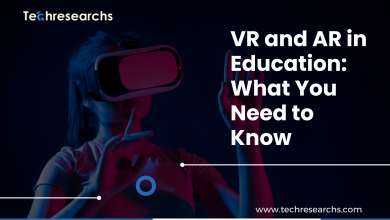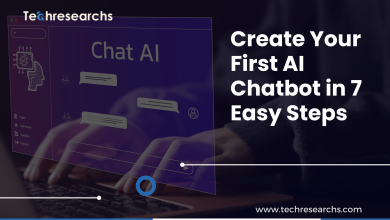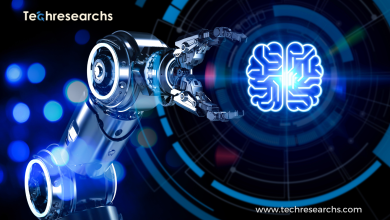How AI Models Use Shared Language to Accelerate Results

In recent years, artificial intelligence (AI) has rapidly become a cornerstone of innovation across industries. From healthcare to finance, AI models are at the heart of revolutionizing traditional processes. However, as AI technology advances, one crucial question remains: how can AI models work together more efficiently to solve complex problems? The answer lies in how these models “speak their own language.”
When AI models communicate seamlessly, they can solve problems faster, process more data, and achieve results that were once unimaginable. This article explores how AI models collaborate effectively, focusing on the importance of a shared language in speeding up problem-solving and driving technological breakthroughs.
How AI Models Collaborate for Greater Efficiency
The Need for Communication Among AI Models
At their core, AI models rely on large datasets and intricate algorithms to process and analyze information. However, just like in human collaboration, the speed and accuracy with which AI models collaborate can significantly impact the efficiency of the task at hand.
When AI models are designed to work in silos, they often fail to maximize their potential. The interaction between multiple AI systems can become fragmented, leading to delays in decision-making, inaccurate outputs, and wasted resources. This is where the concept of AI models “speaking their own language” comes into play.
Understanding the Language of AI Models
Just as different languages can create barriers to communication in human interactions, AI models that are unable to “speak” or communicate with one another efficiently can slow down the entire process. For AI models to collaborate effectively, they need a shared framework or common language. This language is built through the use of standard protocols, data formats, and AI frameworks that allow different systems to understand and interpret one another’s outputs.
For example, models used in natural language processing (NLP) need to have a clear way of conveying their findings to models used in computer vision or speech recognition. When the models are able to “speak” a common language, the results are faster and more accurate.
How Shared Frameworks Boost AI Collaboration
One of the key drivers of faster collaboration among AI models is the development of shared frameworks. These frameworks, such as TensorFlow and PyTorch, allow developers to create AI models that can easily integrate with other systems. These frameworks provide pre-built modules that enable data to flow seamlessly between different models.
- Faster Decision Making: With a shared framework, AI models can instantly pass data to other models for processing. This reduces bottlenecks and ensures faster decision-making.
- Better Accuracy: Standardized communication reduces the likelihood of misinterpretation and increases the chances of more accurate predictions and outputs.
- Scalability: When AI models can speak a common language, it becomes easier to scale them up or down based on the needs of the task.
By integrating various AI models through these frameworks, businesses can streamline processes, enhance productivity, and drive better results.
Key Advantages of AI Models Speaking Their Own Language
1. Speed and Efficiency
AI models working in unison, without communication barriers, drastically reduce the time needed to solve complex problems. In industries like autonomous driving, where real-time data processing is critical, fast communication between AI models means quicker decision-making, enhancing the overall safety and reliability of these systems.
2. Reduced Risk of Errors
When AI models are disconnected or speak different “languages,” errors are more likely to occur. Misunderstandings between systems could lead to inaccurate predictions or decisions. A shared language ensures that data is interpreted in the same way across the entire network of AI models, reducing the risk of errors.
3. Improved Resource Utilization
AI systems can be computationally expensive, requiring significant resources to process data. When AI models collaborate effectively, the entire system works more efficiently, ensuring that resources are used effectively. This not only saves costs but also improves the environmental sustainability of AI systems.
4. Better Problem Solving
Collaborative AI systems that speak the same language are better equipped to tackle complex tasks. For example, AI models used in medical imaging can work with models used in genetic data analysis to make more accurate diagnoses. This interdisciplinary collaboration leads to more innovative and effective solutions.
Real-World Examples of AI Models Collaborating
Autonomous Vehicles
In the field of autonomous vehicles, AI models must work together in real-time to make safe driving decisions. For instance, a vehicle’s sensor system must collaborate with machine learning models that handle visual recognition to navigate the road. Without a common language, these models could misinterpret sensor data, leading to delays or accidents. By speaking the same language, the models can make faster, safer decisions.
Healthcare Diagnosis
AI models used in healthcare can also benefit from speaking a shared language. For example, an AI system might analyze medical images to detect signs of cancer, while another model might analyze genetic data for a more comprehensive diagnosis. When these models can seamlessly communicate, they can provide doctors with more accurate and timely insights.
Financial Forecasting
In the finance industry, AI models used for risk assessment must collaborate with models that analyze market trends, customer data, and global economic factors. By speaking a common language, these AI systems can provide a more holistic view of the financial landscape, enabling faster and more informed decision-making.
Conclusion: The Future of AI Collaboration
AI models that work together faster and more efficiently are not just a luxury—they are becoming a necessity. As industries continue to adopt AI, the ability for AI models to communicate seamlessly with one another will be key to unlocking the full potential of this transformative technology.
Whether in autonomous vehicles, healthcare, or finance, the future of AI will be shaped by how well these models can collaborate. By creating shared languages and frameworks that allow models to work together, businesses can solve problems faster, reduce errors, and make more informed decisions.
More Related Blogs: AI and Cloud: A Perfect Match for Digital Transformation – TechResearchs
Green Technology is the Next Frontier:Rise of Green Hydrogen
If you’re interested in harnessing the power of AI models and boosting collaboration within your business, contact us today to explore how AI integration can enhance your processes. Don’t let inefficiencies slow you down—let AI models speak the same language and work together for faster, more accurate results!



